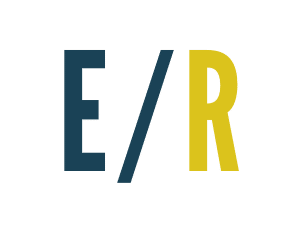Essential gamification tools
Video games, applications or web platforms are some of the 20 tools that we collect in this article to gamify the classroom and that students of any educational level learn in a fun way.

Video games, applications or web platforms are some of the 20 tools that we collect in this article to gamify the classroom and that students of any educational level learn in a fun way.

Gamification is increasingly present in the classroom, but how can it be implemented in the classroom? With these 20 gamification tools the students will be able to learn in a simple and playful way.
Search, create and share your own flashcard games: Brainscape is one of the platforms with the largest number and variety of digital teaching cards available, and we find all kinds of materials on the most varied subjects. It’s as easy as downloading the app (available in iOS and Android) and diving among the available themes, many of them in Spanish. The website also has a section for teachers to get the most out of it.
Imagine a video game that aims to teach math, but being a game the main thing we get from it is fun. Learning math while having fun, who wouldn’t want that? Well, it exists and it’s called knowre, a gamification platform that includes challenges about algebra and geometry, and that seeks to be an accessory for the more formative and traditional class. First the teacher’s explanation and then play to consolidate the knowledge. It is an online platform available through the web and for iPad devices.
Born in Spain and with expansion all over the world, Cerebriti is a game platform that we have already talked about here on some occasions, and that has two aspects: on the one hand, that the students create their own educational games; on the other hand, that they play those created by other users (or by the teachers) to consolidate their knowledge. There are games on all subjects and for all courses and ages, and it is free and multiplatform.
Its launch has opened the door to countless possibilities for application in the educational field. Minecraft: Education Edition is an example of how video games can have their own space in the classroom to teach all kinds of subjects, depending on the resources we want to use. Gamification taken to the extreme thanks to this title which, although born to be simple entertainment, the community itself -including expert educators in the subject- has known how to take advantage of it to improve classes.
Improving the performance of our explanations and presentations as teachers is possible. How? By adding a little bit of gamification with platforms like Pear Deck. While you give your lesson your students can receive content on their devices, such as questions, images or any kind of support material. The aim is to make the lessons two-way to make the most of the explanations.
Have you ever thought of proposing a gambling contest with your students? With Kahoot! you can, as it is a tool that allows you to create question and answer games in a very intuitive way. You can create your own quizzes or join one of the many already created, and available for multiple ages and levels. Pure gamification: rankings, learning and a lot of fun for a tremendously easy to use game, as described in their website.
We have already seen that Edmodo is the closest thing to a social network for educational purposes, and thanks to the possibilities of assigning badges to students we will be able to apply this gamification in the classroom so desired. It creates challenges and exercises and assigns pins to multiple students, not just the best: to the most creative or ingenious solution, to the one who has done the most work, to the best collaborative project, to… whatever you want.
If you want to know more about Edmodo, take a look at this article in which we dismantle all its virtues and characteristics.
It’s possibly the closest thing to a video game. Classcraft is a kind of ‘World of Warcraft’ for education with a huge load of gamification in class, a tremendously visual and attractive platform that allows you to create a world of characters (mages, healers and warriors) who must cooperate and participate in missions to gain points and gold with which to improve their equipment. The objective is to advance in a collaborative way while learning and developing their knowledge. Take a look at what is offered on Classcraft, a freemium platform (i.e. free but with payment options that unlock new content).
With the focus on teaching programming, CodeCombat is a classic among classics, and this is not the first time we talk about this interesting platform. A video game to learn how to program in which we will have to solve certain challenges and problems through code to move forward and improve our level and equipment. Each time will be more complicated approaches, and each time we will learn more. We recommend taking a look at it if you want to learn any of its available languages, such as Python or Lua, among others.
ClassDojo combines a part of gamification and resources for this purpose together with an important platform to inform parents of their children’s progress, while we, the teachers, keep a record of the evolution of each one of them. A platform that will motivate them, that is very easy to set up and that is also completely free and very visually attractive, something that will undoubtedly help to hook the kids.
Do you want your students to learn chemistry? Then check out ChemCaper, an app available for iOS and Android that was born as a project of Kickstarter, and which happens to be a video game that teaches the basics of chemistry, instruments, experimental techniques and much more. With many similarities to ‘Final Fantasy’ and similar games of RPG type, but didactic and formative purposes at the same time.
One of the most successful flashcard platforms thanks to the ease with which you can create your own card packs and use those made by others. Quizlet already has several thousand packs that you can use to learn and review all kinds of concepts, although if you prefer you can also create your own packs adapted to your needs at any time. A touch of game and contest for a completely free platform focused on education.
A complete learning environment ‘made in Spain’, fully developed in our country and which promises to teach and train through play. Toovari is a multiplayer platform where we can create a class for our students to join, testing their knowledge. It mixes assessment and communication with parents to offer a very healthy online environment capable of taking full advantage of new technologies.
Born in the United States, The World Peace Game is a game that is developed in specific camps and workshops. It allows players to be introduced to a political simulation, giving them the opportunity to explore and make new contacts in a community suffering from a major social, economic and environmental crisis, and with the danger of entering an imminent war. The objective is to save all these problems through something very similar to a ‘live role-playing game’ which, unfortunately, is only carried out at certain times of the year in workshops in the United States.
Play Brighter is a platform where you can create your own online learning environment, customized to your tastes and needs. The teacher will be able to configure the universe in which the students will participate, including the creation of missions and the points they assign, challenges or new problems. A platform to create a game within the day to day of the class, and that is also completely free and very customizable.
A tool similar to Kahoot! with which teachers can create tests to be taken in class in real time. It also allows them to share their tests with other teachers and send them home. The tool is flexible as it allows text, images or audio to be added to the questions.
A board game that allows you to practice creative skills in a fun way. It involves drawing, writing/reading, doing calculations and developing your imagination on your own or in company by creating funny monsters. It is designed for students in the first cycle of Primary Education and allows between 1 and 10 players.
Trivinet allows you to play the popular game Trivial online. It also offers the possibility of setting up your own Trivial game with your students in a collaborative way. It can be played online or on Android smartphones.
A collection of interactive multiplayer games for learning by playing online with other players. Includes a large number of interactive games to practice mental arithmetic or learn English. It also allows you to play with children from other schools.
A multi-tool with diverse content designed to make the classroom more dynamic. It allows the creation of presentations, infographics, posters, catalogues and images in a simple and intuitive way
